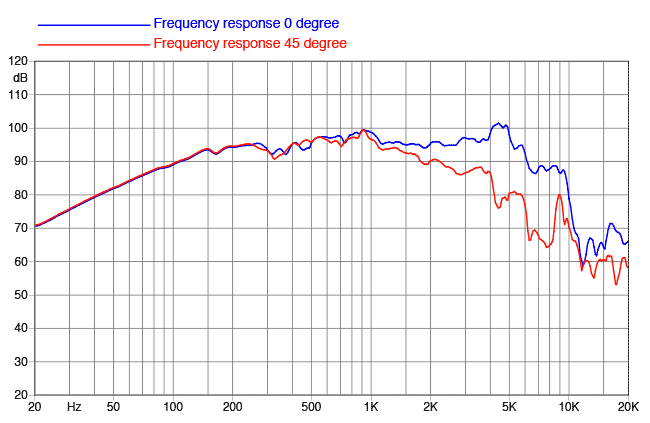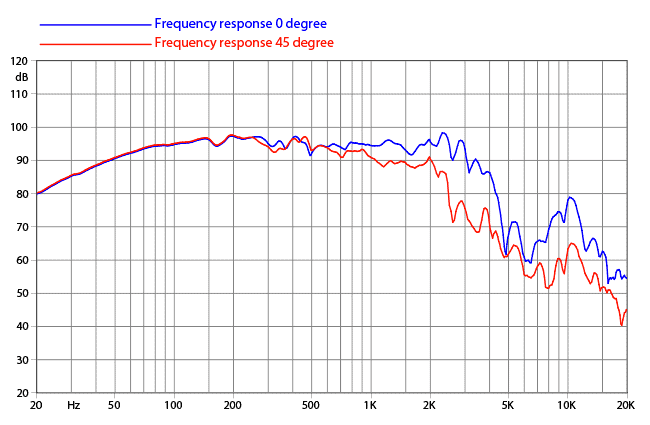Hey guys,
actually I'm designing a 3-way and the midrange is an 8ohm 8-incher in a sealed box and I'm gonna cross it @~180hz. the capacitor of HPF is something like 63uf. I was wondering if it is possible to tune the midrange by stuffing it's enclosure to keep the tuning frequency higher without any high pass filter. I wanted to know from the technical point of view (impedance, etc...) is there any problem doing this?
in this case I will be feeding woofer and the midrange a same frequency range but the midrange wouldn't reproduce some the lower frequencies but I thought maybe the woofer SPL in that areas may be lower because some of the current would be drawn by midrange. any idea?
actually I'm designing a 3-way and the midrange is an 8ohm 8-incher in a sealed box and I'm gonna cross it @~180hz. the capacitor of HPF is something like 63uf. I was wondering if it is possible to tune the midrange by stuffing it's enclosure to keep the tuning frequency higher without any high pass filter. I wanted to know from the technical point of view (impedance, etc...) is there any problem doing this?
in this case I will be feeding woofer and the midrange a same frequency range but the midrange wouldn't reproduce some the lower frequencies but I thought maybe the woofer SPL in that areas may be lower because some of the current would be drawn by midrange. any idea?
Last edited:
which 8" drivers are you considering? 63uF highpass combined with a Z peak could result in a large response peak followed by a dip. Going to a larger capacitor in some instances will extend the LF cutoff lower than no cap at all. (and of course, greater excursion)
which 8" drivers are you considering? 63uF highpass combined with a Z peak could result in a large response peak followed by a dip. Going to a larger capacitor in some instances will extend the LF cutoff lower than no cap at all. (and of course, greater excursion)
Thanks,
Faital Pro 8PR155:

and the woofer is Faital Pro 15FH520 (4ohm):

I'm gonna put a 5.8mH inductor as woofer LPF but after all I'll be measuring to find the best crossing points whatsoever.
that's a beautiful speaker ! - see what you're saying about running w/o highpass - not a lot of xmax
potential with coil 1.8mm longer than the gap height
for a new buy it looks like 8pe21 is less money ($115)
https://www.parts-express.com/pedocs/specs/294-652--8pe21-spec-sheet.pdf
fwiw a quick 2 liter sim

potential with coil 1.8mm longer than the gap height
for a new buy it looks like 8pe21 is less money ($115)
https://www.parts-express.com/pedocs/specs/294-652--8pe21-spec-sheet.pdf
fwiw a quick 2 liter sim

Last edited:
Why wouldn't you want to use a high pass? Cost savings?
No high pass means more power is dissipated in the coil, resulting in more power compression and a larger amplifier is required. It also results in a higher excursion and therefore harmonic distortion.
No high pass means more power is dissipated in the coil, resulting in more power compression and a larger amplifier is required. It also results in a higher excursion and therefore harmonic distortion.
Difficult situation.
If you wanted to do it properly, you'd need an LCR impedance flattening network to get the midrange impedance flat, and then apply whatever crossover you need to get the desired result.
The sealed box will give an acoustic 2nd order highpass filter straight away, which means constant excursion as frequency decreases. The midrange driver you've chosen is a good one, and would probably deal with receiving LF information okay, but it'll always perform better with proper filtering.
Chris
If you wanted to do it properly, you'd need an LCR impedance flattening network to get the midrange impedance flat, and then apply whatever crossover you need to get the desired result.
The sealed box will give an acoustic 2nd order highpass filter straight away, which means constant excursion as frequency decreases. The midrange driver you've chosen is a good one, and would probably deal with receiving LF information okay, but it'll always perform better with proper filtering.
Chris
here's a simple HP filter - sure it could be done better by someone who knows "stuff" (GM for instance)


You are describing a 2.5 way speaker. However, the lower bounds of 180 Hz may be hard to achieve with an 8" speaker. Also, you put more of a load on the amp this way, so it is important to simulate it so you can see the impedance of the finished design.
Motivation?
I agree with some others here, this is a sort of 2.5 way. Which we know CAN work. We have also seen people use the box simply as the HPF without electric XO. So what are your goals? If efficiency and power are a priority, use a traditional HPF (model it first, of course). If you are simply trying to save money, I think it could be done, just make sure you alot enough time to properly model and test it. IMHO those drivers are worth designing and implementing a traditional XO. Keep us updated!
I agree with some others here, this is a sort of 2.5 way. Which we know CAN work. We have also seen people use the box simply as the HPF without electric XO. So what are your goals? If efficiency and power are a priority, use a traditional HPF (model it first, of course). If you are simply trying to save money, I think it could be done, just make sure you alot enough time to properly model and test it. IMHO those drivers are worth designing and implementing a traditional XO. Keep us updated!
Mr. Troels Gravesen has done this sort of thing, of course:
DTQWT TWEAKS
Most posters run away giggling at this point, but that is not my style. 😀
Notice Troels uses 15 ohms on the twin 8 ohm series basses to keep impedance sensible. The 8" mid of yours may or may not present problems for filtering. Yours looks like it has some issues around 1kHz. Troels is up to version III now, so this one can run and run.
DTQWT TWEAKS
Most posters run away giggling at this point, but that is not my style. 😀
Notice Troels uses 15 ohms on the twin 8 ohm series basses to keep impedance sensible. The 8" mid of yours may or may not present problems for filtering. Yours looks like it has some issues around 1kHz. Troels is up to version III now, so this one can run and run.
Why wouldn't you want to use a high pass? Cost savings?
No high pass means more power is dissipated in the coil, resulting in more power compression and a larger amplifier is required. It also results in a higher excursion and therefore harmonic distortion.
the first reason is the cost. on the other hand I think it would sound better without an element in signal chain. just a thought
it's hard to use 60-70uf of good MKT or MKP capacitor at this voltage ratings. would be expensive
that's a beautiful speaker ! - see what you're saying about running w/o highpass - not a lot of xmax
potential with coil 1.8mm longer than the gap height
for a new buy it looks like 8pe21 is less money ($115)
https://www.parts-express.com/pedocs/specs/294-652--8pe21-spec-sheet.pdf
fwiw a quick 2 liter sim

thanks for Hornresp sim
that B&C is also a nice driver. at first I wanted to use 8PR200 with much better excursion but lower sensitivity but decided to go with 8PR155 for a higher eff speaker.
Difficult situation.
If you wanted to do it properly, you'd need an LCR impedance flattening network to get the midrange impedance flat, and then apply whatever crossover you need to get the desired result.
The sealed box will give an acoustic 2nd order highpass filter straight away, which means constant excursion as frequency decreases. The midrange driver you've chosen is a good one, and would probably deal with receiving LF information okay, but it'll always perform better with proper filtering.
Chris
Thanks Chris for good tips
what LCR would you use to normalize the impedance peak?
halving capacitance and chamber volume (~75uF and 1.5 liter)

very good thanks. I was playing with Hornresp and I was pretty close to this. 😉
You are describing a 2.5 way speaker. However, the lower bounds of 180 Hz may be hard to achieve with an 8" speaker. Also, you put more of a load on the amp this way, so it is important to simulate it so you can see the impedance of the finished design.
the speaker will be using 15FH520 as woofer, 8PR155 as midrange and HF10AK with an elliptic horn as tweeter. you are right about amp load but the speaker would be using with Hypex NC500 amplifiers and they are good at driving speakers like this.
thanks for the tips,
I agree with some others here, this is a sort of 2.5 way. Which we know CAN work. We have also seen people use the box simply as the HPF without electric XO. So what are your goals? If efficiency and power are a priority, use a traditional HPF (model it first, of course). If you are simply trying to save money, I think it could be done, just make sure you alot enough time to properly model and test it. IMHO those drivers are worth designing and implementing a traditional XO. Keep us updated!
good points.
I'll be looking for some good caps 60-70uf and then go for XO
Most posters run away giggling at this point, but that is not my style.
Seriously asking, what does that mean? Not sure where you’re coming from.
- Status
- Not open for further replies.
- Home
- Loudspeakers
- Multi-Way
- Midrange without a HPF?